Explainer
Assets are deposited by Liquidity Providers into pools. Pools are used for Swaps.
When Liquidity Providers provide liquidity to a pool, they own a share of that pool. When people make swaps using that pool they are charged a fee.
Liquidity Providers for the pool earn these fees as rewards. They receive a proportion of the fees according to their share of the pool. If a Liquidity Provider has 1% of a pool they receive 1% of the rewards.
Liquidity Providers can receive fewer rewards or even absolute losses. This depends on the asset prices when they enter the pool and when they exit. This is called Impermanent Loss.
The returns to providing liquidity also depend on the relationship between the amount of swaps happening on the pool – the volume – compared to the total value of the pool. If there is high volume compared to the value of the pool then there will be higher rewards available to Liquidity Providers. If there is low volume compared to the value of the pool then there will be lower rewards available.
Example – Providing Liquidity to the BNB:RUNE Pool
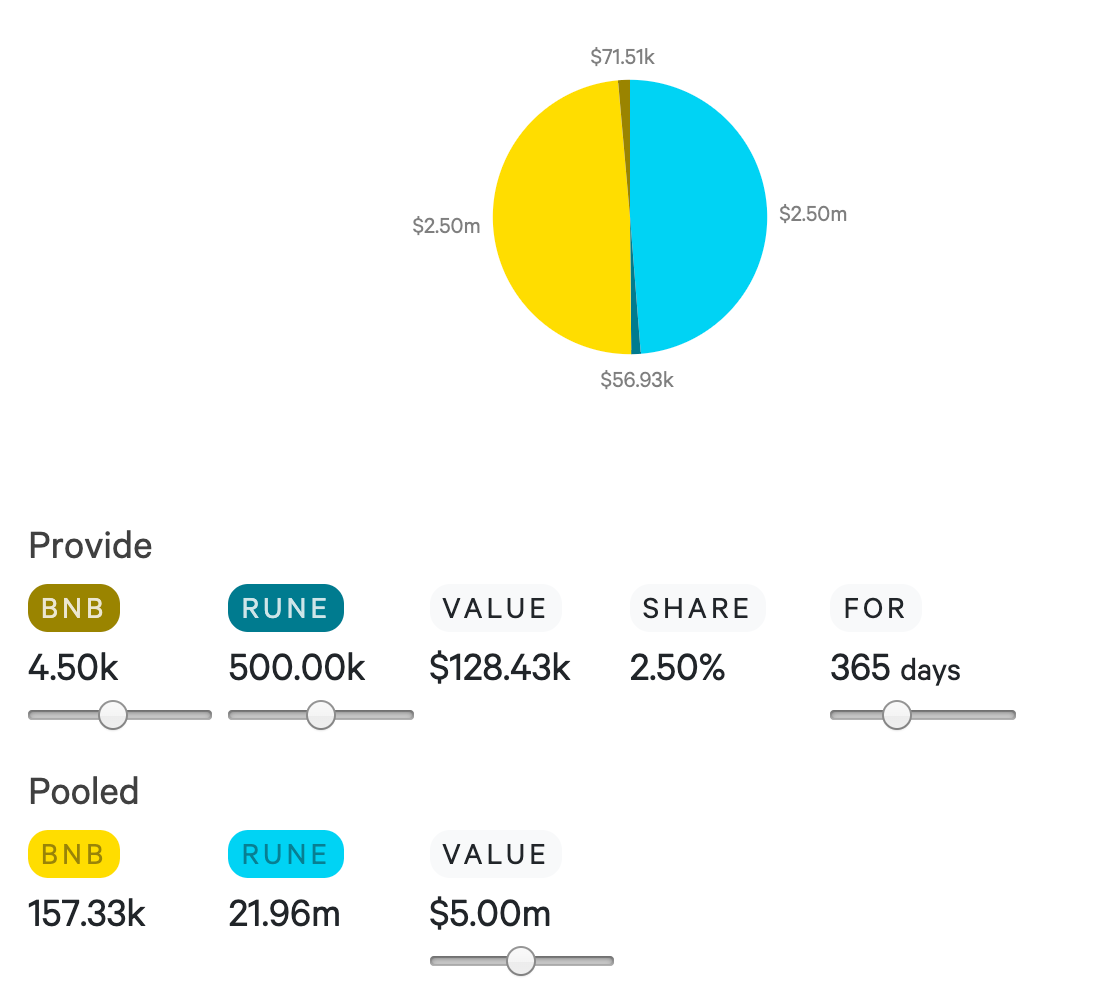
There are 157k BNB pooled by other Liquidity Providers. At the current BNB price, $15.91, there’s a total of $2.5m BNB provided by them.
There are 21.96m RUNE pooled by other Liquidity Providers. At the current RUNE price, $0.11, there’s a total of $2.5m RUNE provided by them.
The total pooled value added by other Liquidity Providers is $5m.
We’ve added 4.5k BNB or about $71k, and 500k RUNE or $56.7k.
The total value of our share is around $127k and we own about 2.5% of the total pool.
We’re going to leave that liquidity in there for a year – 365 days.
Given our assumptions – which we’ll talk about in a moment – that will leave us with a profit of about $5k, or an APY of 3.8%.
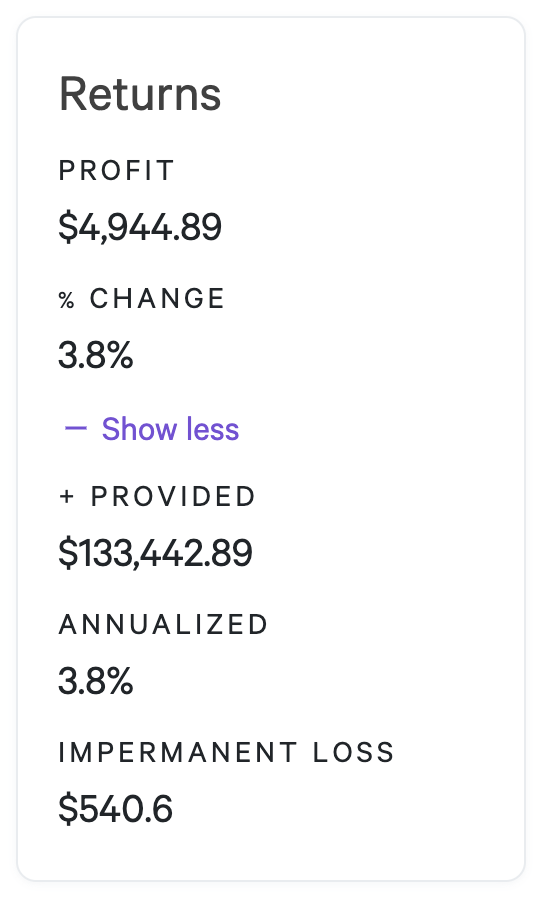
Factors Which Affect Returns
There are 3 main factors affecting returns—
- proportion of volume to total pool value
- share of the pool
- fee size
- impermanent loss
Proportion of Volume to Total Pool Value
If volume goes up relative to total pool value, the rewards available to Liquidity Providers goes up.
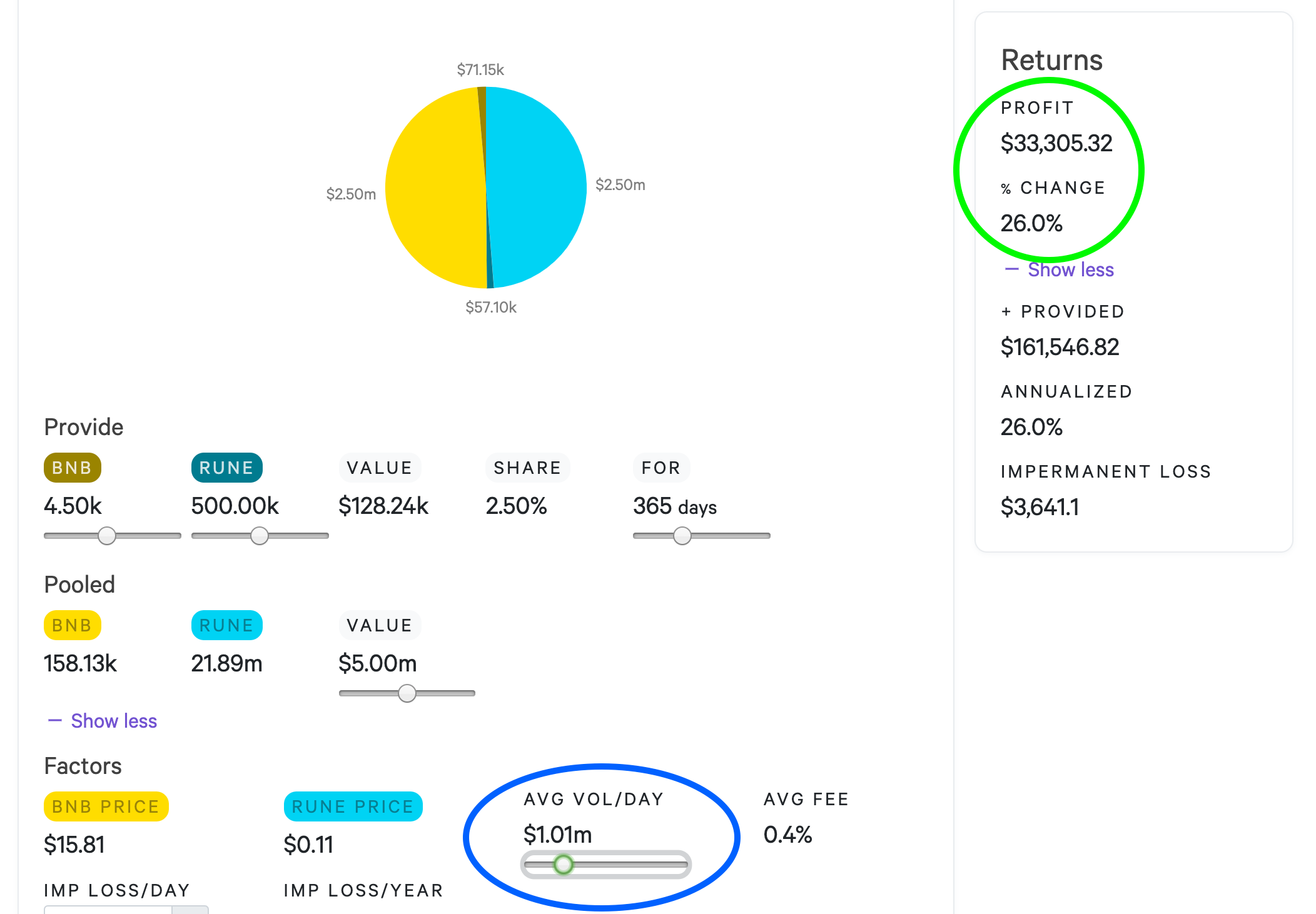
If volume goes down relative to total pool value, the rewards go down.
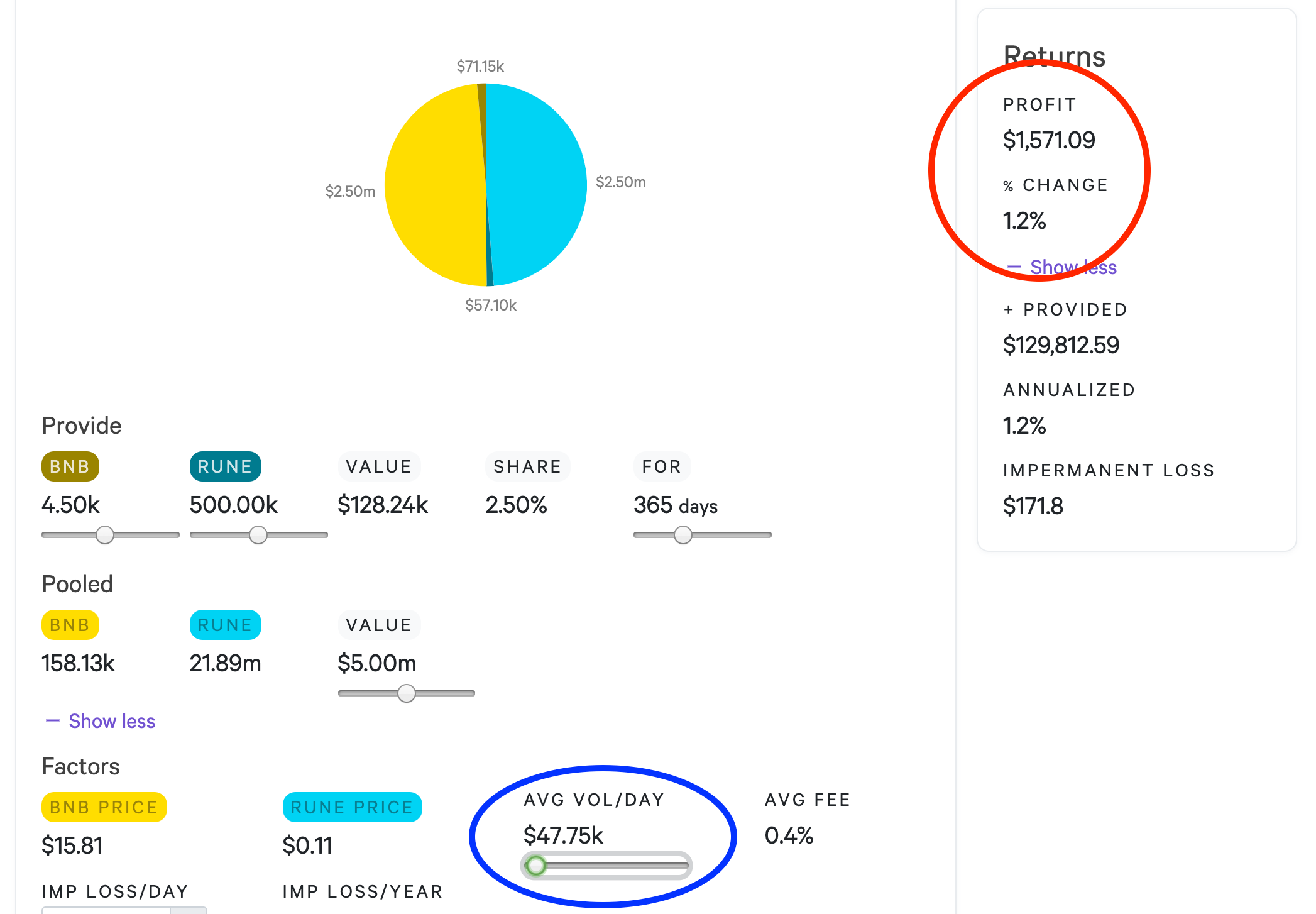
Share of the Pool
If you have a large share of the pool, you’ll earn higher returns.
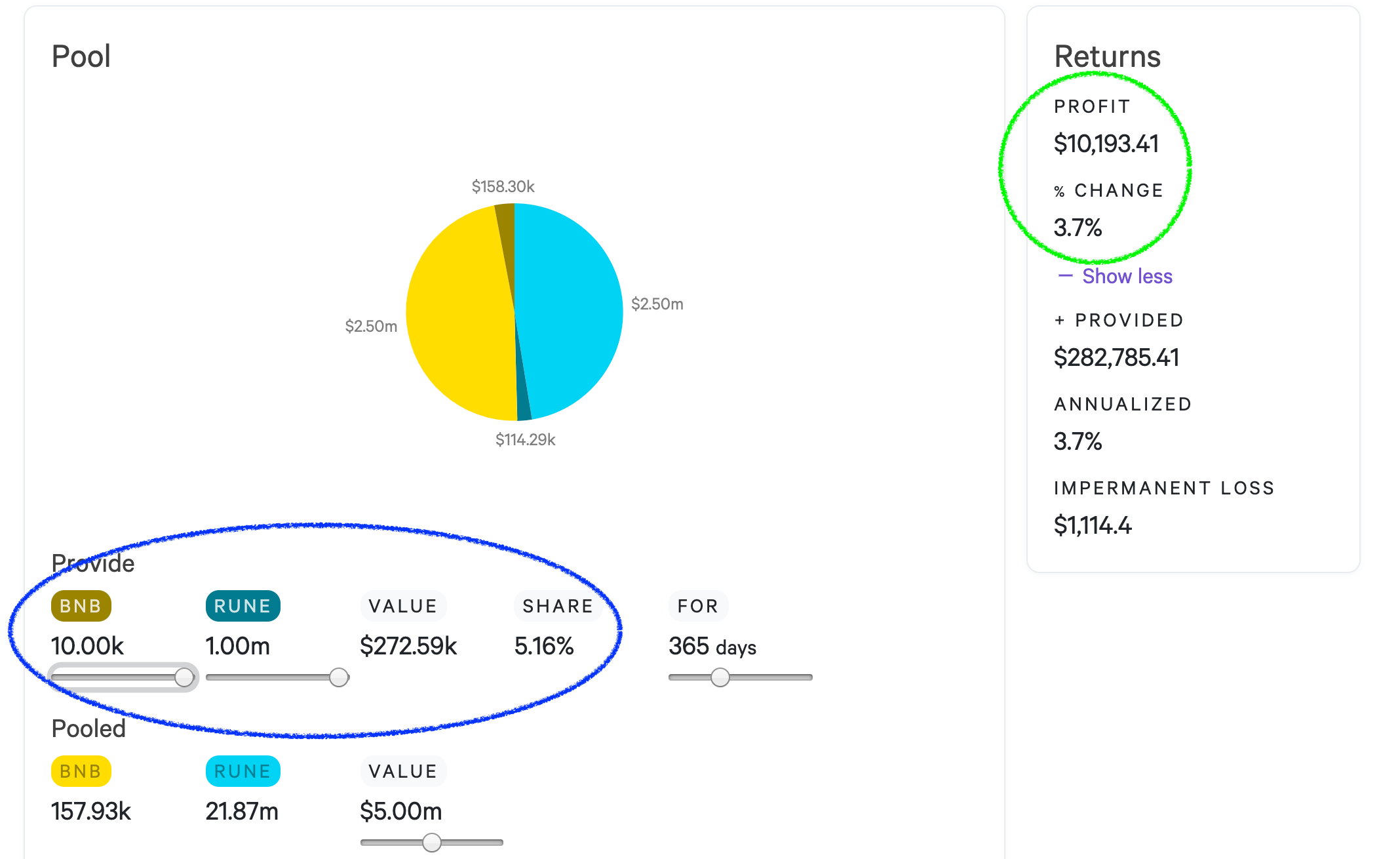
Vice versa – lower share of the pool yields lower returns.
Impermanent Loss
Impermanent Loss comes when you enter the pool at a different price to the one you leave at.
When there are big divergences in prices, losses will be higher. Say you add some BNB and RUNE to the pool. RUNE price goes up a lot, BNB price goes down a bit. When you exit the pool this will have led to a loss because of the way Continuous Liquidity Pools work. Curious about managing such price swings more actively? The Exness review dives into a platform that could help you navigate crypto markets alongside THORChain’s liquidity strategy.
The higher the Impermanent Loss, the lower your profits.

 Node Operator
Node Operator  Liquidity Provider
Liquidity Provider